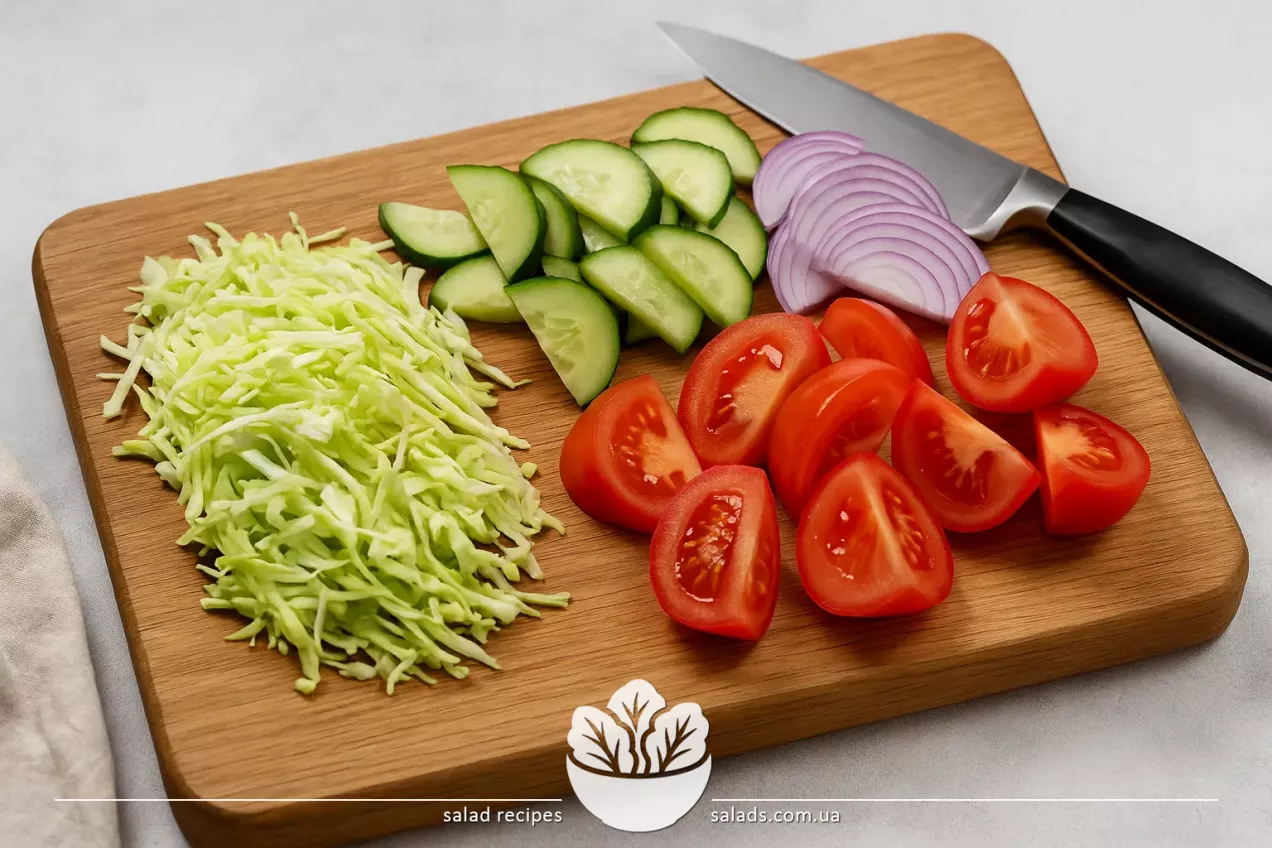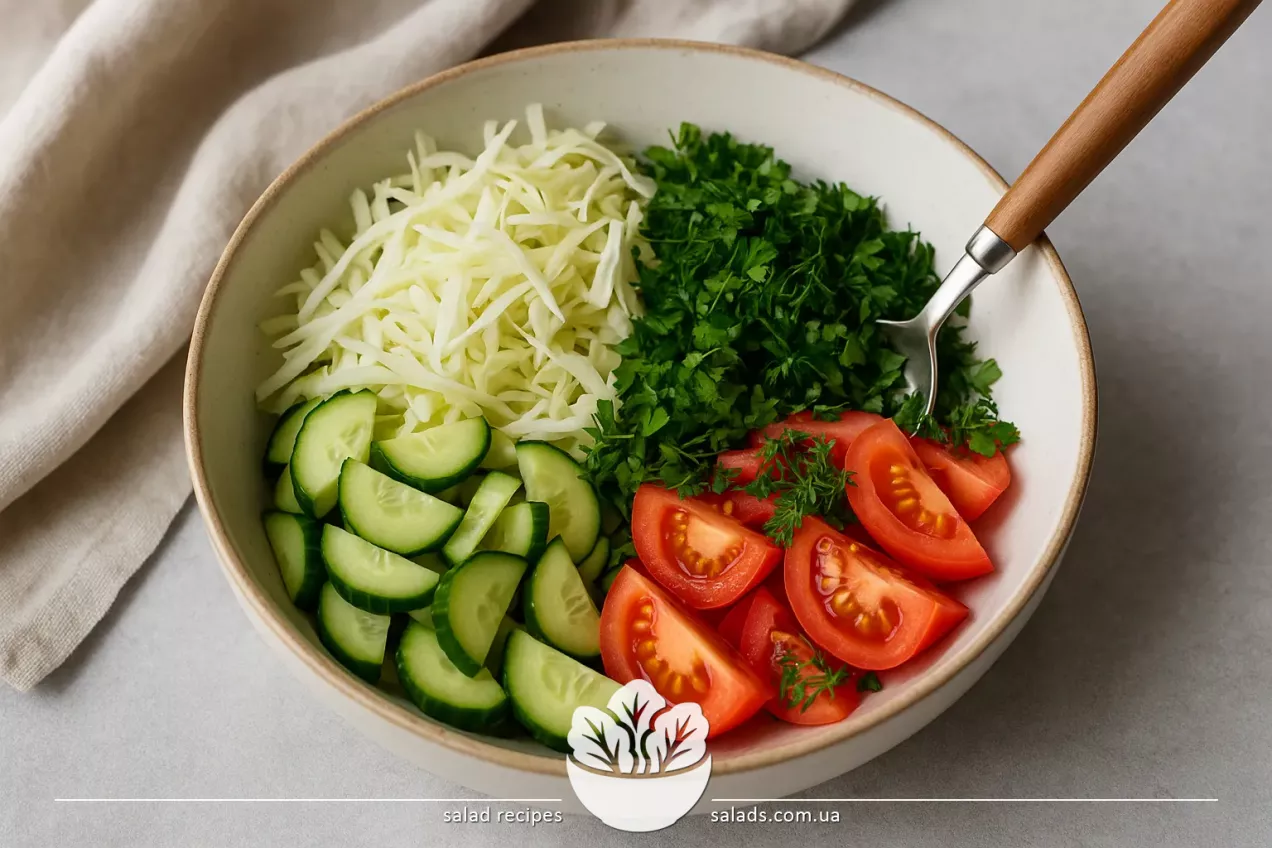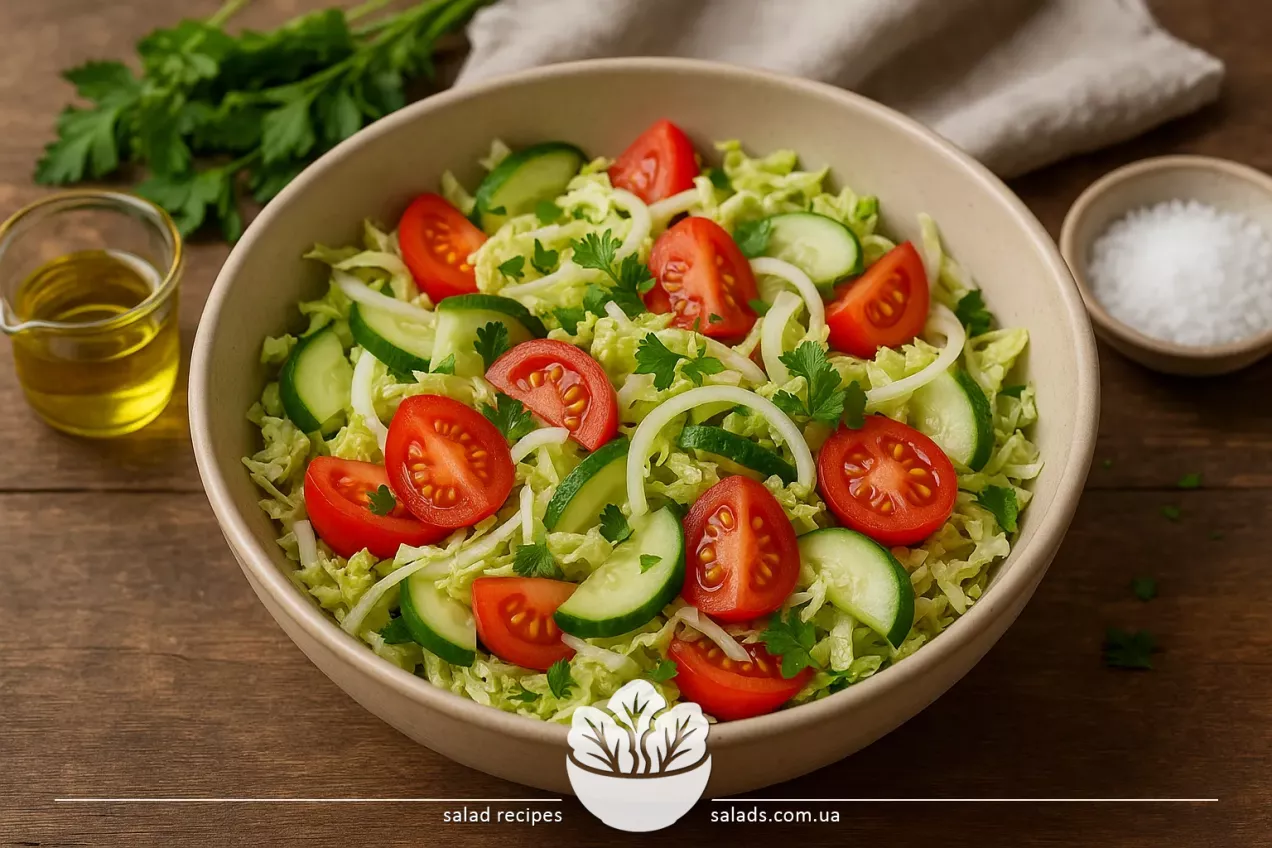
Fresh vegetable salad is one of those recipes that has been with me since childhood. In our family, we made it almost daily during the warm season, and I’ve continued that tradition in my own kitchen. Its base – cabbage, tomatoes and cucumbers – perfectly complements any main course. But what I love is that it’s not limited to just three ingredients: I sometimes add radishes, sweet peppers, a bit of lettuce or even grated carrots if I have them on hand. Still, I make the basic version most often – it’s the freshest and lightest.
The secret to this salad is in the proper prep of the vegetables. I always lightly knead the cabbage with salt – it softens but stays crunchy. I slice the cucumbers into half-moons and the tomatoes into juicy wedges. In summer, it’s especially tasty with homegrown vegetables – from the garden or the market. I only use unrefined oil for dressing – I enjoy the aroma of sunflower or olive oil depending on the season. And I add some herbs – dill, parsley, or green onions when they’re young.
I don’t make this salad in advance – it tastes best when fresh. On weekdays I serve it with fried fish or cutlets; on weekends, just with potatoes or grains. And when I want a truly light dinner – a plate of vegetable salad and a piece of bread are enough. There’s nothing excessive in it, yet it has everything needed – freshness, vitamins and health benefits.
Ingredients for Fresh Vegetable Salad
How to Make Fresh Vegetable Salad
Prepare the Vegetables
I start with cabbage – it should be finely shredded so the salad stays soft but crisp. Then I salt it and lightly knead it by hand – not to the point of stewing, just until it becomes more elastic. Next, I slice the cucumbers into half-moons and the tomatoes into juicy wedges or large cubes. I choose the onion depending on the season: green in spring, regular bulb onion (thinly sliced) in other times of the year.
Mix the Ingredients
In a large bowl, I combine all the prepped vegetables. I add finely chopped herbs – I like a mix of parsley and dill, but I use whatever’s in the fridge. Then I add the oil – usually unrefined olive oil, but sometimes I use fragrant homemade sunflower oil. I add salt, a bit of pepper and mix gently. If the cabbage has released a lot of juice – I drain the excess liquid before dressing.
Serve Immediately
This salad doesn’t store well – I always serve it right after making. It pairs well with any meal: meat, fish, grains, potatoes. Or it can be served as a light dinner on its own, especially on a hot day. If there are leftovers – it’s best to store for no more than a few hours in the fridge, without the dressing.
Tips
-
It’s best to prepare the salad just before serving – that way the vegetables stay crisp, and the juice doesn’t dilute the flavor of the dressing.
-
I always knead the cabbage by hand with a pinch of salt – this quickly softens it and makes it more pleasant to eat, without losing structure.
-
It’s best to add the oil right before serving – if the salad sits longer, the vegetables release juice and the dressing loses its richness.
-
You can soak the onion in vinegar for a few minutes or scald it with boiling water – this will make it less sharp while keeping a mild pungency.
-
The salad is easy to customize: I sometimes add grated carrots, radishes or bell peppers – it makes it even more colorful and nutritious.


